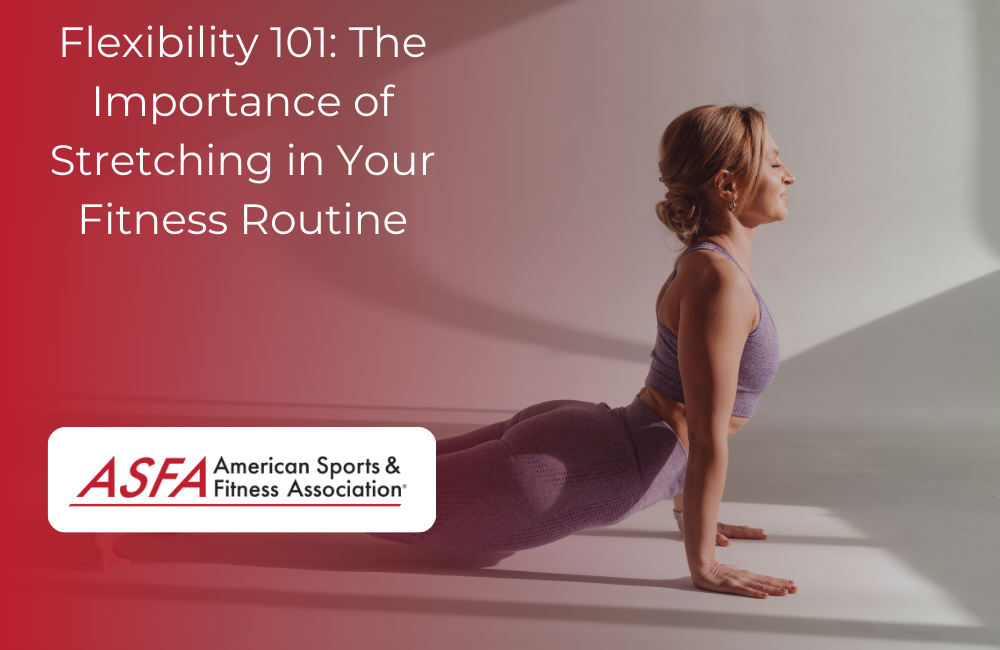Flexibility is a key component of overall fitness that is often overlooked. Incorporating stretching exercises into your fitness routine offers a wide range of benefits, from improving range of motion to reducing the risk of injury. This article delves into the significance of flexibility and provides practical tips on how to incorporate stretching into your regular workout regimen.
Understanding Flexibility
Flexibility refers to the range of motion of your joints and muscles. It is an essential component of physical fitness, alongside strength, endurance, and cardiovascular health. Maintaining good flexibility allows for efficient movement and helps prevent muscle imbalances or stiffness.
The Benefits of Stretching
- Improved Range of Motion: Regular stretching exercises increase the flexibility of your joints and muscles, allowing for a greater range of motion in various activities.
- Reduced Risk of Injury: Stretching helps to improve muscle elasticity and joint mobility, reducing the likelihood of strains, sprains, and other injuries during physical activity.
- Enhanced Performance: Flexible muscles and joints can perform tasks more efficiently, leading to better athletic performance in sports and activities.
- Alleviation of Muscle Tension and Discomfort: Stretching can alleviate muscle tension, reducing feelings of discomfort or tightness.
- Better Posture: Improved flexibility can help correct postural imbalances, leading to better alignment and reduced strain on the spine and supporting muscles.
- Stress Relief: Engaging in stretching exercises promotes relaxation and can serve as a form of stress relief.
Types of Stretching
- Static Stretching: This involves holding a stretch in a comfortable position for a prolonged period (usually 15-60 seconds). It targets specific muscle groups and is typically done after a workout.
- Dynamic Stretching: Dynamic stretches involve controlled movements that gradually increase your range of motion. These are best suited for warming up before exercise.
- PNF (Proprioceptive Neuromuscular Facilitation) Stretching: This involves a combination of passive stretching and muscle contractions. It is often performed with a partner or using a prop.
- Ballistic Stretching: This involves bouncing or jerking movements during a stretch. It is not recommended as it can lead to injury.
Incorporating Stretching into Your Routine
- Warm Up First: Always begin your workout with a brief warm-up to increase blood flow to the muscles. Dynamic stretches like arm circles and leg swings are effective.
- Focus on Major Muscle Groups: Target areas like the legs, back, chest, shoulders, and arms to ensure comprehensive flexibility.
- Breathe and Relax: Take slow, deep breaths while stretching and avoid tensing your muscles. Relax into each stretch.
- Do Not Overstretch: Stretch until you feel mild tension, not pain. Overstretching can lead to injury.
- Consistency is Key: Incorporate stretching into your routine on a regular basis, ideally both before and after workouts.
- Listen to Your Body: Pay attention to how your body feels during stretching. If you feel discomfort or pain, adjust the stretch accordingly.
Elevating Your Fitness Journey
Flexibility is an integral part of a well-rounded fitness routine. By incorporating stretching exercises, you enhance your range of motion, reduce the risk of injury, and improve overall performance. Embrace flexibility training as a fundamental aspect of your fitness journey, and experience the numerous benefits it brings to your physical well-being.




